NIL
Mountaineers Defeat UCF for Fourth Consecutive Sweep
Next Game: vs. vs. Marshall 4/30/2025 | 6 p.m. Apr. 30 (Wed) / 6 p.m. vs. vs. Marshall ORLANDO, Fla. – The No. 17 West Virginia University baseball team finished off a sweep of UCF on Sunday, defeating the Knights, 4-3, at John Euliano Park. It is the fourth consecutive Big […]
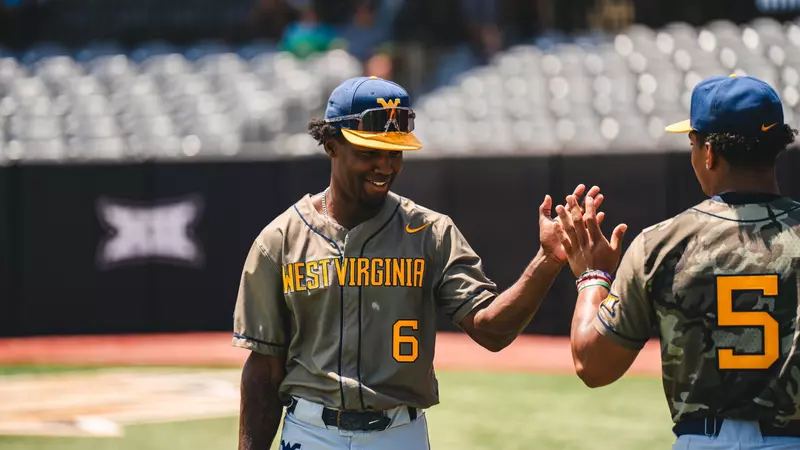
ORLANDO, Fla. – The No. 17 West Virginia University baseball team finished off a sweep of UCF on Sunday, defeating the Knights, 4-3, at John Euliano Park. It is the fourth consecutive Big 12 sweep for the Mountaineers who improve to 37-5 overall and 16-3 in the Big 12 while the Knights fall to 23-20 and 6-15 in conference play.
In a game that WVU entered shorthanded in the bullpen, graduate student Jack Kartsonas gave the Mountaineers just what they needed by going 6.2 innings while allowing three runs and striking out five. Junior Ben McDougal finished the game with 2.1 perfect innings on just 17 pitches, a day after throwing 2.2 scoreless innings.
Senior Jace Rinehart had two doubles and drove in three runs while junior Sam White had an RBI and junior Skylar King scored two runs.
Rinehart’s first double came in the first as he drove in King to put WVU on top. The Knights answered in the home half to even up the game and took the lead with a run in the second.
In the fifth, Rinehart nearly hit a three-run home run as he hit a ball off the top of the wall, settling for a two-run double to put WVU on top. White then drove in Rinehart to put the Mountaineers up 4-2.
UCF got one run back in the sixth and had the tying run in scoring position in both the sixth and seventh, but Kartsonas and McDougal got out of the jams.
McDougal then needed just eight pitches in the eighth and only four in the ninth to collect his first save of the season.
West Virginia will be back on Wednesday in Charleston when it takes on Marshall at GoMart Ballpark. First pitch is set for 6 p.m.
For more information on the Mountaineers, follow @WVUBaseball on Twitter, Facebook and Instagram.
NIL
Clemson plan to pay players revenue, NIL after House settlement approved
Beginning July 1, Clemson athletes will be paid revenue directly by the school plus third-party income they already earn for use of their name, image and likeness. U.S. District Judge Claudia Wilken approved the House settlement, which resolves three federal antitrust lawsuits against the NCAA and four power conferences (ACC, Big Ten, Big 12, SEC), […]
Beginning July 1, Clemson athletes will be paid revenue directly by the school plus third-party income they already earn for use of their name, image and likeness.
U.S. District Judge Claudia Wilken approved the House settlement, which resolves three federal antitrust lawsuits against the NCAA and four power conferences (ACC, Big Ten, Big 12, SEC), on June 6. Her approval will allow schools that opt into the revenue sharing format to begin paying its athletes up to an annual cap estimated at around $20.5 million. That doesn’t include NIL pay, which is still allowed.
This is a huge shift in college sports, which moves closer to a professional model.
Here’s what Clemson fans need to know about this new system.
Each school will have a salary cap
There will be a cap of approximately $20.5 million that a school can pay its athletes per academic year. That is 22% of the average revenue from ticket sales, media rights and sponsorships by power conference schools. That cap will increase each year, similar to how pro leagues’ salary caps increase.
Schools determine which athletes are paid and how much, as long as the total doesn’t exceed the cap. Presumably, schools will spread revenue among several players, similar to a pro team’s payroll.
Players can still have as much NIL money as the market will, but those deals must withstand a new vetting process.
Here’s how Clemson could divide revenue
Athletic director Graham Neff did not specify exact percentages to how much revenue sharing will go to each sport, but he said it will distribute money according to revenue each sport produces. This means football will command a stronghold of the estimated cap, which football coach Dabo Swinney hinted at in November.
“We’re going to be as good as anybody out there,” Swinney said. “Nobody will have more money, so then we will have the opportunity.”
A model was prescribed in the preliminary House settlement: Approximately 75% to football players, 15% to men’s basketball, 5% to women’s basketball and 5% to other sports. This model for revenue distribution is just a baseline as schools will adjust those percentages based on need and different strategies. Conferences may also set standards for each member school to follow.
Clemson will also fully fund every roster position, increasing scholarships totals from 275 to 425. This will cost around $2.5 million of the $20.5 million, so there will be $18 million available to directly pay players
Football will likely exceed that percentage as it generates the most profit. In fiscal year 2024, Swinney’s program brought in around $87.2 million, about 72% of Clemson’s revenue across 21 sports, and netted a profit of $19.4 million profit, according to its latest NCAA financial report. This will cause other sports, like its men’s basketball program, to receive a lower percentage of the cap.
The scholarship increases will be huge for Clemson’s other sports though. Baseball will have 34 instead of the previous 11.7 limit, which will help Clemson’s program that has hosted three straight regional tournaments. The extra scholarships may also attract athletes to schools willing to fund them, especially non-revenue sports like baseball, soccer, softball and lacrosse.
Clemson opted in to revenue sharing but every school will not
Athletic department budgets have relied on this revenue for decades, but now they must share a significant portion of it with athletes. Schools will either have to cut expenses, increase revenue or both if they decide to opt in.
Clemson has prepared for the revenue-sharing era by adding a student athletics fee, increasing season-ticket prices for football games, approving the sale of alcohol at sporting events and hosting non-NCAA sports on campus like the Savannah Bananas in April. It also created a revenue-generating entity, Clemson Ventures, that will produce in-house sales and sponsorship and facilitate NIL deals with business for Clemson athletes
$20.5 million is the floor, not the ceiling due to name, image and likeness
Athletes can earn revenue-shared money from schools and NIL dollars. This is because businesses and third-party collectives fund NIL, while revenue shares will come directly from the school.
This means the richest schools and their boosters can exceed the $20.5 million cap if they want to maximize player pay and build more talented rosters.
This method may not be feasible in the long run, though, as those same boosters and fans, who donate and buy tickets from athletic departments and fund NIL collectives, could grow tired of paying athletes through two different entities.
How NIL deals will be vetted post-House Settlement
The power conferences are creating a new NIL enforcement arm called the College Sports Commission. Regardless of if a school opts in to making NIL payments, any Division I athlete who has a deal, or deals, worth $600 or more will have to report those deals to a system called “NIL Go.”
That data will be evaluated to determine whether the deal has a “valid business purpose” and is within “a reasonable range of compensation,” whatever those terms are deemed to mean. This means the NCAA will no longer police revenue sharing or NIL.
This new process could turn NIL into what it was intended to be: Businesses paying athletes for endorsements rather than fans funding NIL payrolls. Still, it’s a difficult standard to define and uphold, meaning lawsuits could come.
Derrian Carter covers Clemson athletics for The Greenville News and the USA TODAY Network. Email him at dcarter@gannett.com and follow him on X, formerly known as Twitter, @DerrianCarter00
NIL
St. John's, Rick Pitino Given Elite Ranking for Transfer Portal Activity
Rick Pitino is aiming to build a resurgent season, where the St. John’s Red Storm emerge as one of the top teams in college basketball. However, St. John’s roster will look significantly different this upcoming season, thanks to the Red Storm’s activity in the transfer portal, which has landed seven impact players. ESPN’s Jeff Borzello […]
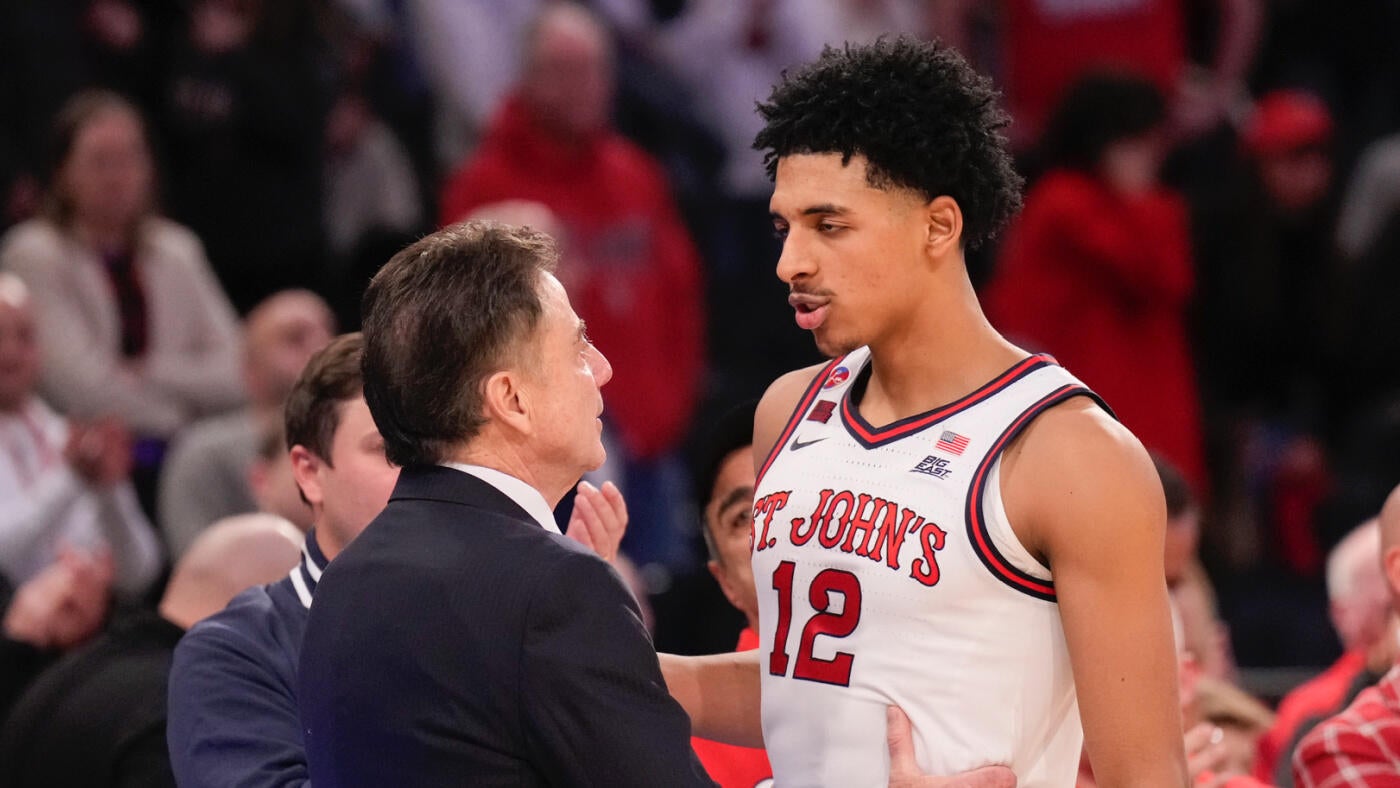
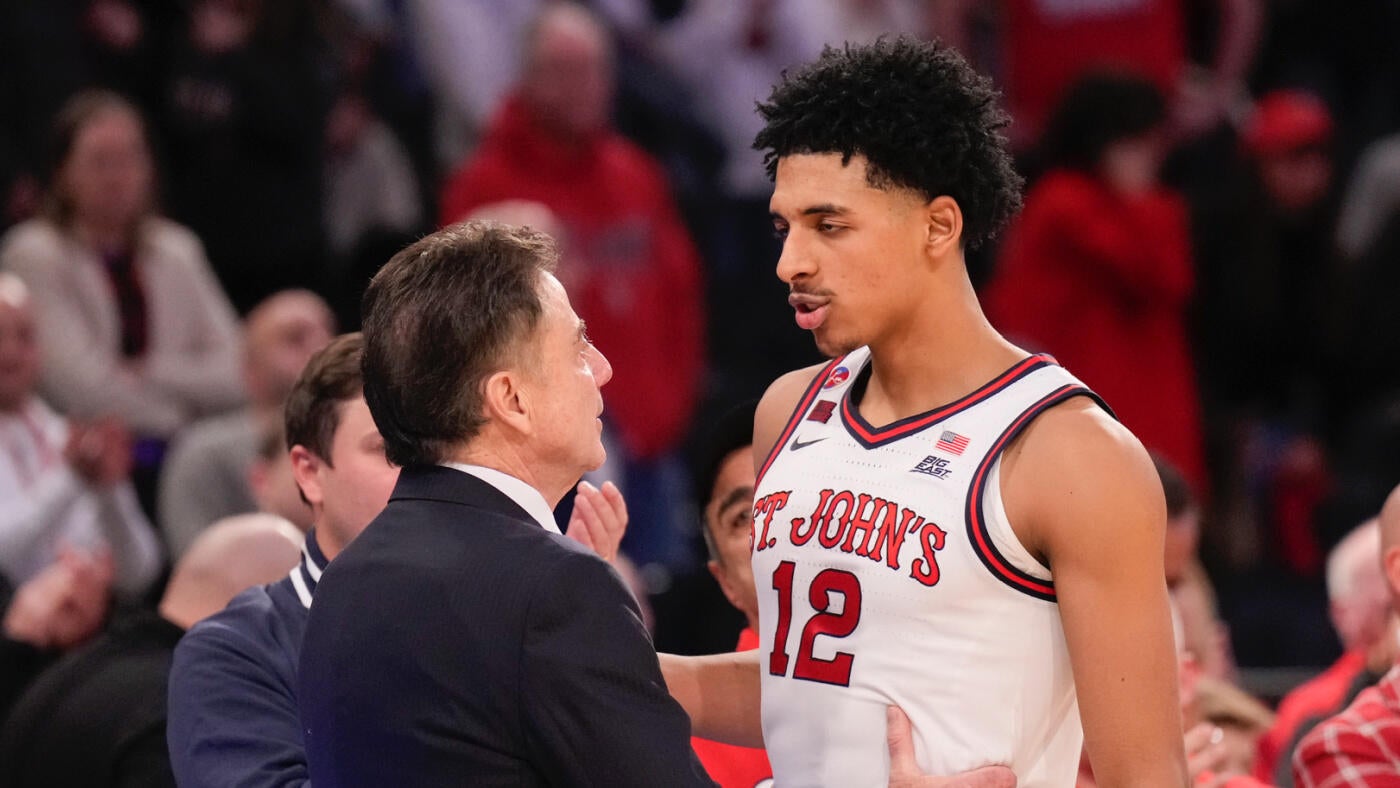
Rick Pitino is aiming to build a resurgent season, where the St. John’s Red Storm emerge as one of the top teams in college basketball.
However, St. John’s roster will look significantly different this upcoming season, thanks to the Red Storm’s activity in the transfer portal, which has landed seven impact players.
ESPN’s Jeff Borzello recently ranked his top transfer portal draft classes heading into the 2025-26 season, and the analyst ranked the Red Storm at No. 1.
“St. John’s narrowly got the top spot. The Red Storm had huge success last season leaning on a talented perimeter group built from the transfer portal, and they’re hoping to do the same in 2025-26,” wrote Borzello.
“Rick Pitino landed five top-100 transfers, led by former first-team All-Big East selection Hopkins and former top-25 recruits Jackson and Sanon. Sellers adds shooting, and Mitchell brings an intriguing amount of versatility. Jackson and Sanon are not natural point guards, so Darling provides insurance at that position.”
The players new to the St. John’s program this season are Bryce Hopkins, Oziyah Sellers, Joson Sanon, Ian Jackson, Dylan Darling, Dillon Mitchell, and Handje Tamba.
Not only did the Red Storm land some of the most talented players in the transfer portal, but their arrival will address massive voids on St. John’s roster.
Jackson will provide an upgrade at the point guard position, and Sellers will help St. John’s be a more consistent outside shooting team.
On paper, the Red Storm should be a championship contender next season. However, we still have to see how this team will mesh on the court.
MORE: Oklahoma City Thunder Projected to Target Creighton Standout in NBA Draft
MORE: Atlanta Hawks Predicted to Land Georgetown Star in NBA Draft
MORE: Orlando Magic Urged to Land Colorado State Star in NBA Draft
MORE: BYU Cougars Standout Receives Major Prediction Ahead of NBA Draft
MORE: Analyst Gets Honest About Jay Wright’s Chances Of Becoming Knicks’ New Coach
NIL
Vanderbilt Ready to Lead in New Model for College Sports
On June 6, the U.S. District Court for the Northern District of California granted final approval of the House v. NCAA settlement—launching a new era for college athletics. This ruling creates a foundation for greater stability, fairness, and opportunity for student-athletes—and affirms what we at Vanderbilt have long believed: transformation, when grounded in mission and […]
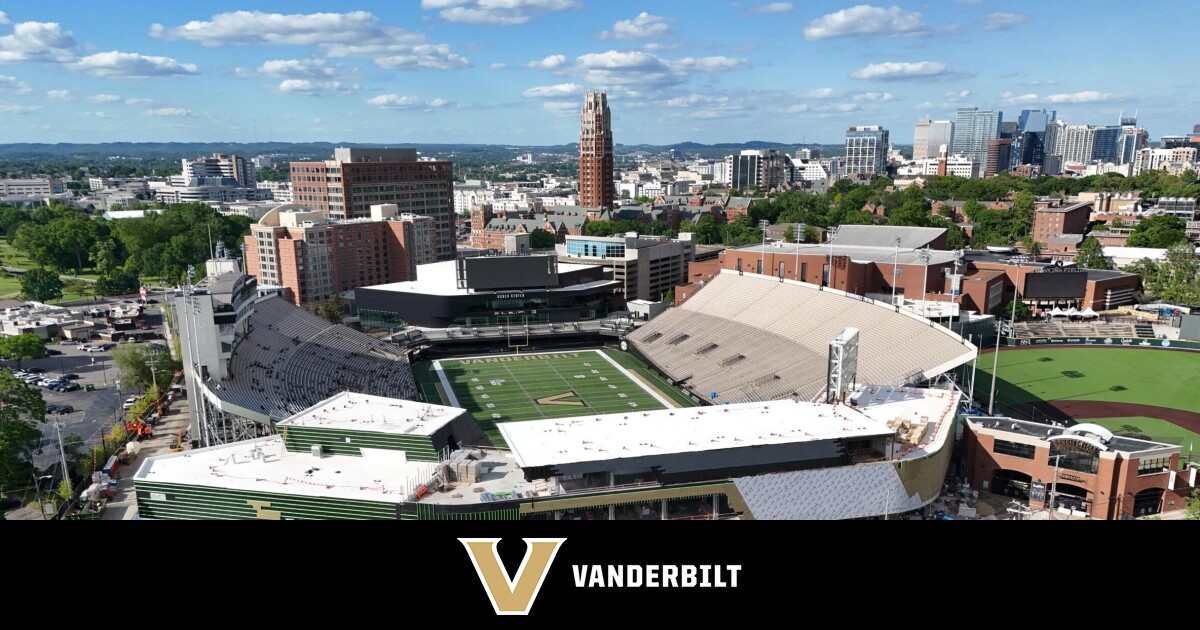
On June 6, the U.S. District Court for the Northern District of California granted final approval of the House v. NCAA settlement—launching a new era for college athletics.
This ruling creates a foundation for greater stability, fairness, and opportunity for student-athletes—and affirms what we at Vanderbilt have long believed: transformation, when grounded in mission and values, creates opportunity.
As we continue to build the great university of the 21st century, we remain steadfast in our commitment to providing a championship-caliber student-athlete experience that integrates academic and athletic excellence and strengthens our One Vanderbilt community.
The newly formed College Sports Commission, led by Bryan Seeley—former MLB executive and a respected voice in sports law—and its partners, Deloitte and LBi Software, will be responsible for ensuring compliance and supporting institutions through this transition.
While the settlement offers a clearer, more structured path forward, we will continue to work with our legislative partners on potential federal solutions that can bring long-term stability and consistency to the college athletics landscape.
Key pillars of the new model include:
Revenue sharing: Beginning with the 2025–26 academic year, SEC, ACC, Big 12 and Big Ten institutions may share up to 22 percent of defined athletics revenue with student-athletes—estimated at up to $20.5 million per school.
Scholarship expansion: With scholarship limits removed, universities now have more flexibility to offer educational opportunities to a broader range of student-athletes across sports. Removing scholarship limits gives schools the flexibility to better support student-athletes and their education, while supporting the long-term success of broad-based sports programs. Current and immediately incoming student-athletes who may have been adversely impacted by roster limits will still have the opportunity to earn a roster spot.
NIL conditions: The new NIL Go platform, managed by the College Sports Commission and its partners, Deloitte and LBi Software, will streamline the reporting and approval process for third-party NIL agreements—enhancing transparency while protecting student-athletes’ eligibility.
Our recent launch of Vanderbilt Enterprises and the appointment of Markus Schreyer as CEO underscore our readiness to embrace innovative models that support excellence in education, research, and athletics.
We are also preparing for the financial responsibility that comes with this new model and remain focused on driving strategic initiatives like Vandy United and advancing the mission of Vanderbilt Athletics. With your support, we will continue to set the standard in this new era.
This is a defining time for college sports. Though much is changing, the essence of what athletics represent—community, growth, discipline, excellence—remains firmly intact.
We are ready to lead. And together, we will succeed.
Anchor Down!
Daniel Diermeier
Chancellor
Candice Storey Lee
Vice Chancellor for Athletics and University Affairs and Athletic Director
NIL
Five hot takes from landmark House v. NCAA settlement: Parity boom ahead as big dogs may start to go hungry
It’s been coming down the pipe for years, but it finally happened — college athletics has forever changed with revenue sharing thanks to the House v. NCAA settlement. Now, the door’s been removed from its hinges for a new era in what was formerly known as amateur sports. Last week’s $2.8 billion, 10-year settlement ushers in […]

It’s been coming down the pipe for years, but it finally happened — college athletics has forever changed with revenue sharing thanks to the House v. NCAA settlement. Now, the door’s been removed from its hinges for a new era in what was formerly known as amateur sports.
Last week’s $2.8 billion, 10-year settlement ushers in backpay for previous student-athletes who missed out on name, image and likeness opportunities and beginning July 1, colleges are allowed to pay current players directly. There’s an expected $20.5 million on the table per school to share with their players in the upcoming academic year with a new revenue sharing cap that increases by at least 4% every year — except Years 4, 7 and 10 when Power Four revenue baselines are determined — for the next decade.
Most of the money will be earmarked for football (estimated 75%) and men’s basketball (~15%), with the rest being dispersed to women’s basketball (~5%) and other sports (~5%).
The biggest winners and losers from House v. NCAA settlement: Amateurism is dead and the class divide grows
John Talty
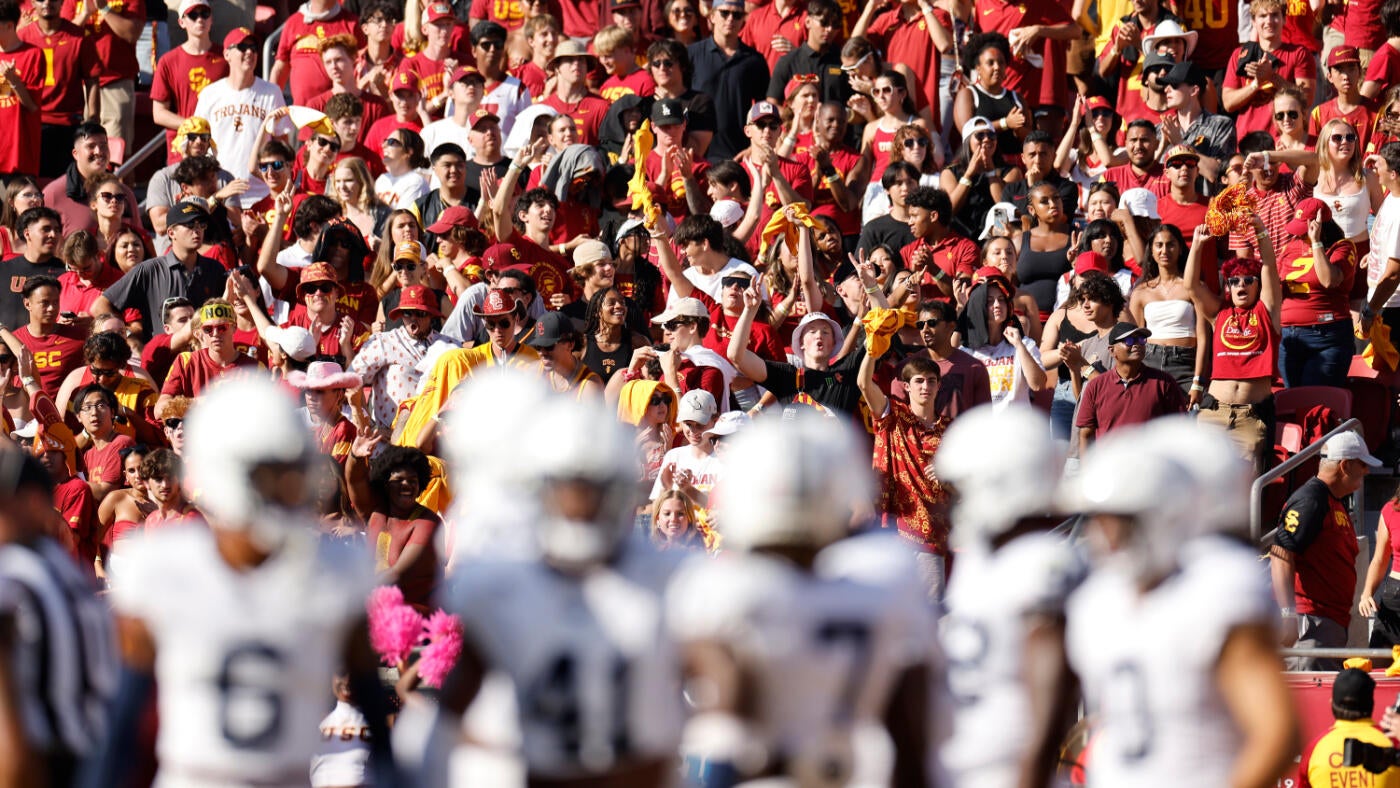
Here’s a couple quick opinions on the landmark decision and how things may look moving forward:
1. Prepare for parity
TCU reaching the national championship game a few years ago piqued interest, as did Cincinnati and Boise State reaching the playoff as Group of Five surprises. Should we expect more of the same in the coming years? If you’re fans of a Power Four program, you bet, and at a few others, there’s an enhanced chance for annual success. Glancing at the recruiting powerhouses within college football and basketball in the modern era, most have various factors in common: rich history, incentivized exposure and an opportunity to star at the highest level. You can wear a blindfold and generally guess how many five-stars Duke will sign on the hardwood or Georgia’s placement at the top of the SEC’s food chain.
However, since the playing field will be closer to level financially, it’s no guarantee a five-star quarterback would sign with Ohio State over Maryland moving forward, for example, if the Terps are offering a more handsome contract through direct revenue sharing. While the notion of the Buckeyes “buying” their national championship last season with a reported $20 million roster received pushback, Ohio State’s no longer one of the only handful of programs who can afford payroll that expansive in the new era.
We’ve already seen early reminders at the top of the recruiting board for the nation’s best players the last two cycles that all the prized fish aren’t necessarily being lured by the the title-contending, biggest yachts in the sea. Per 247Sports’ individual player rankings, 25 different Power Four programs have signed at least one five-star since 2024’s early signing period. That number dwarfs the five-star disparity across the modern era in any other two-year sample size. SMU, Georgia Tech, Nebraska, Texas Tech and Colorado are among the programs who have landed their highest-rated prep signee ever during that stretch.
2. Big dogs may not eat (as much)
Casuals say preseason polls are meaningless, right? Well, media shapes the national discussion every offseason and there’s a certain expectation for teams inside the top 15 every year to show out. There’s a built-in bias there from bluebloods getting the benefit of the doubt thanks to the same dozen or so programs signing the top talent year after year. That’s going to change with revenue sharing. Teams will have to consider their “payroll” or sorts and determine where money will be spent and at what positions.
During the first year of the expanded playoff, three SEC teams who were ranked throughout the regular season missed out on the bracket with three losses, including playoff mainstay Alabama. Why do you think SEC commissioner Greg Sankey and others from the Big Ten are advocating for four auto-bids from those leagues in the next portion of playoff expansion and harping on strength of schedule? It’s growing increasingly more difficult to go unbeaten with better balanced schedules and more competitive conferences from top to bottom, and that’s going to continue with revenue used to fund rosters.
In December, college basketball’s top recruit, AJ Dybantsa, committed to BYU over traditional power Kansas and North Carolina in an unprecedented move. Part of the Tar Heels’ sales pitch to Dybantsa was the opportunity to follow in the footsteps of Michael Jordan and Vince Carter, along with spotlighting the potential of future career earnings through endorsements deals like Zion Williamson’s contract with Nike after he starred at Duke over in-state finalist — and non-traditional power — Clemson.
Instead, BYU was able to match Dybantsa’s reported asking price of $5 million through its collective, and that deal is considered the largest for any incoming college basketball player ever. Moreover, transfer portal signings have further shifted the balance of power in college basketball, and the days of the top-five teams in the country gobbling up all the elite signings are evaporating.
3. Boosters no longer playing point
What happens when boosters figure out their massive annual contributions to a football program may not result in an automatic nationally ranked finish that carries playoff buzz every December? It’s coming. We’ve already seen athletic directors and figureheads at elite programs asking fans to “fight back” and help fund respective rosters with the talent disparity shrinking within major conferences. With this new revenue sharing commitment that all Power Four programs are dealing with, where’s the ROI for the most deep-pocketed donors?
We’ve already seen a groundswell of schools using social media to rally its fanbases and ask for donations after big wins or momentum-changing announcements. How often over the last year alone have you seen fans complaining about funding salaries for players, many of whom are signing year-to-year deals and wanting an enhanced contract at its conclusion? Without a sense a loyalty and the transfer portal being a dip into free agency, it seems many fans — and worst-case scenario, boosters — could become disinterested in donating to the cause.
The last thing these major programs across football and basketball want is wide variance in booster support if those contributors are unwilling to assist in funding annual rosters and tossing extra funds on top of what schools receive through TV contracts, conference revenue dispersement, ticket sales and other guarantees. All this being said, you can still the football-first entities around college sports — programs like Texas, Oklahoma, Georgia, etc. — to have higher budgets than others.
4. NIL collectives losing momentum
Those within NIL offices have to be sweating right now. How about the “agents” who have reaped the benefits of unregulated NIL over the last few recruiting cycles? There’s a “fair market” review process in place now for third-party deals, and there will be enhanced scrutiny on partnerships thanks to the College Sports Commission (CSC), an oversight arm of sorts. With virtually no parameters previously, pay-for-play checks that were hidden as marketing agreements in the past must pass the sniff test with these changes.
NIL is not being eliminated, but it will be curbed and its impact far less important thanks to the rules adjustments and players having opportunities elsewhere through revenue sharing that could be far more lucrative.
Various reports indicate collectives hurried to finalize multi-million dollar with franchise-caliber players before this House settlement ahead of the July 1 switch. Any athlete who receives $600 or more through an NIL deal must report that partnership to the new enforcement arm later this summer. The contract will then be further evaluated to determine if the NIL parameters meet a “valid business purpose” and are within “a reasonable range of compensation.” How that is defined in terms of legitimacy, no one knows.
5. Amateurism is extinct
As CBS Sports’ Brandon Marcello appropriately put it, “the NCAA’s 119-year amateurism model died Friday with a judge’s pen,” and he’s right. Any key contributor for your favorite college football or basketball team moving forward will be paid, handsomely, with “cost of attendance” being a laughable phrase from yesteryear. Those stale arguments about tuition, housing and meals provided to scholarship athletes being enough are extinct and, bluntly, have been for years.
While most agree paying college players is long overdue with events like the College Football Playoff and NCAA Tournament generating hundreds of millions, there was an essence of purity within intercollegiate athletics that brought a special sense of pride to the playing field. Let’s stop pretending any of that was authentic in recent years.
NIL
House Settlement Will Lead To Plenty Of Hurt Feelings Across College Sports
College athletic directors will meet this week in Orlando for the annual NACDA (National Association of Collegiate Directors of Athletics) convention, with the approved House settlement being the main topic of discussion. There’s plenty of questions left to be answered, and not a lot of time to figure them out, as payments to players begin […]
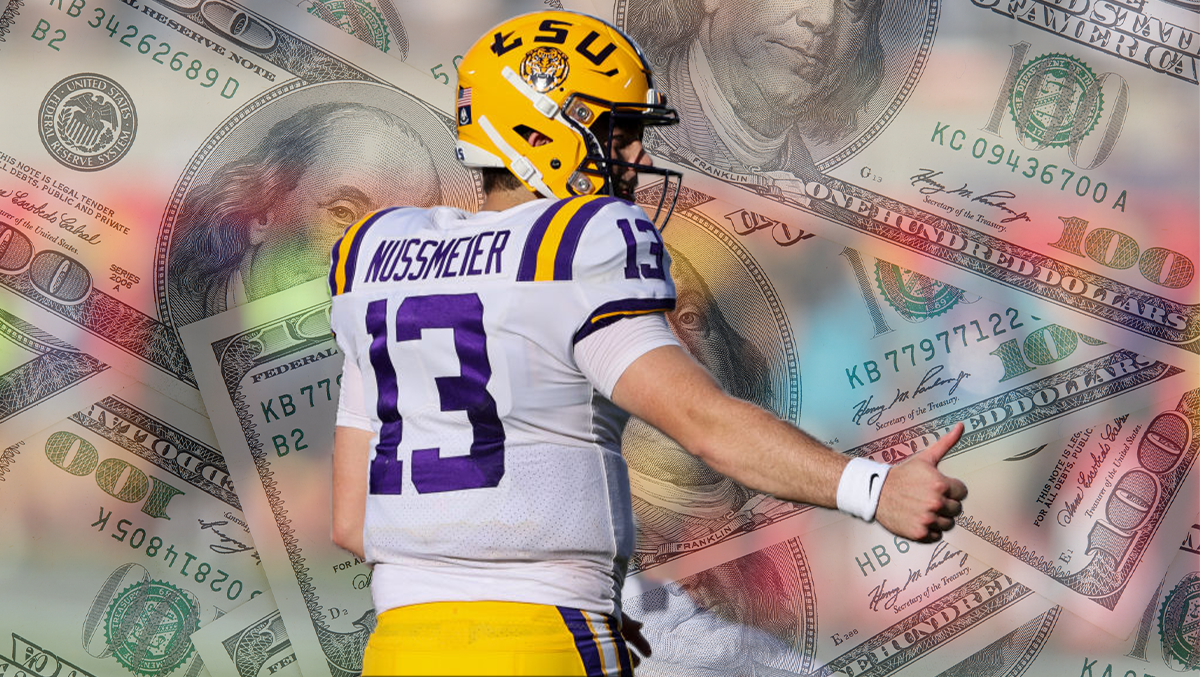
College athletic directors will meet this week in Orlando for the annual NACDA (National Association of Collegiate Directors of Athletics) convention, with the approved House settlement being the main topic of discussion. There’s plenty of questions left to be answered, and not a lot of time to figure them out, as payments to players begin July 1st.
But, piecing this all together is going to be a tall task, for the time being.
Now that players are set to start being paid by the schools themselves, this is going to lead to athletic departments having to make a number of tough decisions about how they will afford this new venture.
How in the world does everyone stay on a level playing field moving forward? That was the intention of the House settlement, right?
No, this is going to get very murky, quickly. While the conversations around how these schools will afford to pay these players have been ongoing for upwards of two years, reality has set in for athletic directors across the country.
To pay for these new salaries, schools will use money generated from ticket sales, media rights, concessions and any other type of revenue that comes from sports on campus. Yes, this even means your ticket prices will increase if you haven’t already seen it. Some schools have already implemented a ‘talent fee’ for each ticket purchased by fans, but that will most likely increase over time.
The biggest question coming off the approval from Judge Claudia Wilken doesn’t center around the monetary gains from athletes. No, plenty of administrators are wondering when the next lawsuit will be filed, with some type of grievance from the settlement being used as the vocal point of litigation.
How Will Future NIL Deals Work For Athletes? It’s Complicated
At the center of this new era in college athletics is the $20.5 million being the revenue starting-point for schools to spread out between different sports on-campus. Most ADs are going to upset athletes who participate in non-revenue-generating sports, simply because football and basketball are paying the bills.
How much will the softball or track and field team make next season? Not much, if it doesn’t come from outside NIL deals from companies willing to spend money on sports that don’t garner the same type of viewers as football or basketball.
The main point of concern is teams putting together NIL deals for players that carry a name that is big enough for a company to see a return on investment. The fact is, most athletes aren’t known outside the campus boundaries, or within the fan base.
And now, each NIL deal that is over $600 will have to be presented to a clearinghouse that will determine whether it’s legitimate or not.
“How are they going to say one deal is different from the other,” one athletic director pointed out to OutKick. So, every time our school or a third party has an idea for a partnership that exceeds $600, we’re at the mercy of this system that will determine if it’s legit. What happens when an athlete decides not to disclose their ‘NIL’ deal with the clearinghouse, and just pockets the money from a booster?
“These are the types of scenarios that will present themselves in the short term. We have no idea how the system is going to work, and you’re going to have players get their deals rejected. This will only lead to further lawsuits. This will be a non-stop problem in the first year. But, we have to find ways to raise more money, as well. The high-profile schools aren’t just spending $14 to $16 million that rev-share allows. If we want to keep up, there has to be an influx of money, and we’re just talking about one year.”
This athletic director isn’t wrong. While plenty of people want to act as if this settlement will not lead to the ‘old days’ returning, my question is, how can it not? If a school agreed to a $3 million contract with the star receiver, but can only pay half of the deal because of the revenue-sharing cap, you think that player is going to take a cut?
Heck no, they want what was agreed upon, and the minute one NIL deal is denied, there will be further litigation. According to the College Sports Commission, if a deal is denied, both parties can enter ‘neutral arbitration’ that starts with an appeal.
Over Revenue-Sharing Within Athletic Departments
One of the biggest problems that will come from this settlement centers around how much money each program will get from the $20.5 million.
If the football team is going to get 75% of the allowed $20.5 million, that doesn’t leave a lot for the other athletic programs on each campus. Let’s just say the basketball team gets 15%. That leaves just 10% for softball, soccer, Olympic sports, volleyball and even baseball.
This is where it gets tricky for some powerful schools. There will be plenty of athletic departments that decide to give the baseball or basketball program a bigger share. The schools that don’t have a football program are going to reap the benefits of the settlement, and could put 75% towards the basketball team. Well, that will certainly lead to some programs being able to afford to put together a more powerful team on the court, compared to the school only setting aside $3 million.
See where I’m going here?
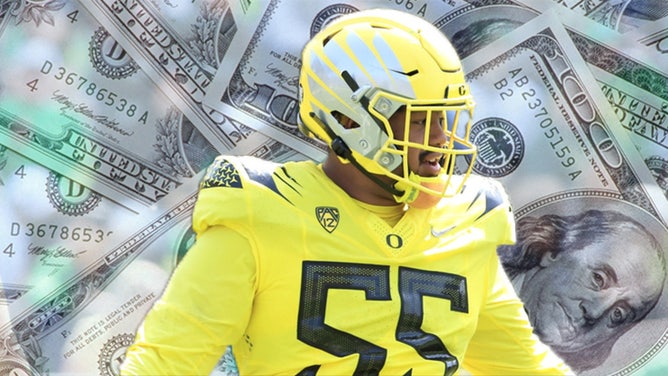
It’s going to cost more than the allotted rev-share if schools want to compete for national titles.
There are going to be plenty of arguments within the same athletic department regarding how much money is allocated to each sport, and it will get contentious.
“It’s really going to be a sh-t show moving forward,” a Big Ten AD told OutKick. What’s that saying, ‘Winter Is Coming’? I’ve already had coaches from the softball and baseball programs telling me how much they need to compete with other schools, with the transfer portal open. But, we just don’t have that much money lying around to give them what they need at the moment, just to keep up with another program who decided baseball is more important than basketball. We’re trying to find it though.
“Thank goodness our school has a good accountant, because my phone hasn’t stopped blowing up from coaches who feel as though they’ll be left out. And, I don’t blame them for harping on me for money, because this is our new reality. It’s going to be a fight.”
As the athletic directors from a variety of schools meet this week in Orlando, plenty of them are going to have to put their guards down. If college athletics are going to get this right, they had better start sharing some ideas, without giving away confidential trade secrets.
We are three weeks away from schools paying athletes directly. So, the clock is ticking on how AD’s make this work, knowing they’re going to upset a lot of people around college campuses across the country.
Game on.
NIL
CBS Sports’ Chip Patterson calls NCAA antitrust settlement a ‘sidestep’
A new era of college athletics is here, as Judge Claudia Wilken approved a multibillion-dollar legal deal, as schools can now pay athletes directly. CBS Sports’ Chip Patterson offers his thoughts on the settlement, Mike Elko’s program and much more. Key notes from Chip Patterson interview We aren’t moving in the wrong direction. We’ve changed the […]
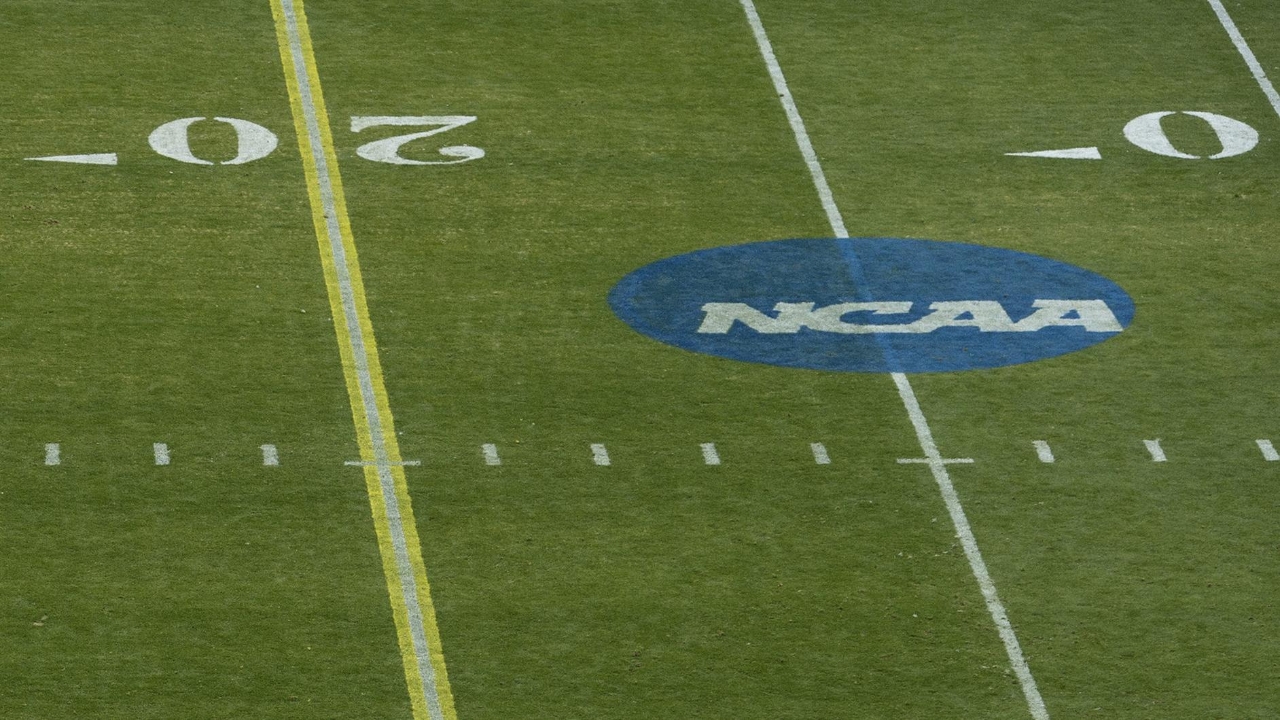
A new era of college athletics is here, as Judge Claudia Wilken approved a multibillion-dollar legal deal, as schools can now pay athletes directly. CBS Sports’ Chip Patterson offers his thoughts on the settlement, Mike Elko’s program and much more.
Key notes from Chip Patterson interview
- We aren’t moving in the wrong direction. We’ve changed the game rules and created a new environment. When NIL was first approved, it was dumped onto the leadership of college sports with no guidance. With the school directly paying players… I don’t know if it’s a win or a loss. It’s a sidestep. We’ve created a new set of problems to solve.
- Big picture, NIL didn’t address the way that schools are making so much off media rights payments. The students weren’t getting paid for the images that the players were being used in the media. The big picture doesn’t get down to the coaches and administrators who figure out how much goes to each player, coach and program. This is the “Is it gonna get passed? Is it not? Is it gonna get approved? Is it not?” Look, administrators put in the work so July 1, they are ready to go. I’m confident the sports world won’t collapse on July 1. There’s just a new set of challenges for the college sports world to solve.
- The employment leads to contracts, which are hopefully tighter and standard. Public and private universities have an employee through a conference which allows them to sign deals. Maybe it doesn’t work within the conference with transfers. Can you buy out of the contract and receive compensation? Their problem is the players who go to seven different schools cashing out.
- I like one portal window over two. I like the mid-January standpoint. You would’ve completed the postseason for most schools. You aren’t the first sports team to have a slow start. Let’s say after the quarterfinals of the College Football Playoff. I think it helps coaching and player commitment. You will still have players opt out of the playoffs and bowl games, I’m assuming. Every six months, there’s free agency. I think that’s unhealthy. I personally support the American Coaches Association’s options. It’s like, “Buddy, our problems are way bigger than the academic calendar.” For the sport as a whole, I don’t think it’s healthy to have a readjustment of contracts every six months.
- I don’t think Bill Belichick enjoys the tabloid stuff. His juices get flowing around the football guys. He’s with this North Carolina roster, building a group that will put his coaching skills to the test. It comes from his old mentor, Bill Parcells. Talking about being able to coach football but not being able to teach size. Let’s get big guys that need to be coached up, which is fascinating. The NFL ran him out of the league. There’s morbid curiosity coming from the NFL. The people who revel in the chaos are the people in the NFL. One of the reasons it’s such a big focus of fascination comes from the NFL.
- The one thing about last season at Texas A&M was the instability at quarterback. There has to be an assumption that you can take a step forward. That last game against Texas, where the biggest prizes were on the table. Texas could barely move the ball. Mike Elko got those boys charged up. The defense was playing lights out, and you just wished you could move the ball, but didn’t have enough healthy bodies.
- I think culture is overused, but Elko is a culture plus by instilling things day-to-day and how he gets the guys fired up every day. Getting Marcel Reed a full offseason and reinforcing the wide receiver position, where you don’t have to do anything you didn’t do before. I think they need guys in the locker room to breed this confidence. They need someone to be able to finish and go forward by competing for spots in the playoffs. I think you can look at Elko like a defensive mastermind.
- Elko may have years with great success and frustration. I think coming off that LSU win, you have to work on being ready. Duke always had a chip on their shoulder. A&M was riding real high, getting in the driver’s seat. It’s a good thing to have in the back of the mind, remembering the two bad losses.
-

 College Sports3 weeks ago
College Sports3 weeks agoPortal Update – Basketball and Gymnastics Take Hits
-

 Professional Sports3 weeks ago
Professional Sports3 weeks agoJon Jones answers UFC retirement speculation as fans accuse champion of 'holding the belt …
-

 Youtube3 weeks ago
Youtube3 weeks agoXavier Legette taught Marty Smith his signature celly
-

 Motorsports3 weeks ago
Motorsports3 weeks agoWhy IHOP Rode With Dale Earnhardt Jr. In Amazon NASCAR Debut
-

 NIL2 weeks ago
NIL2 weeks ago2025 NCAA Softball Tournament Bracket: Women’s College World Series bracket, schedule set
-

 College Sports3 weeks ago
College Sports3 weeks agoNCDC Commitment Profiles: Cyclones’ Martins Moving On to Saint Anselm College • USPHL
-

 High School Sports3 weeks ago
High School Sports3 weeks agoToday in the MHSAA
-

 Health4 days ago
Health4 days agoOregon track star wages legal battle against trans athlete policy after medal ceremony protest
-

 College Sports1 week ago
College Sports1 week agoIU basketball recruiting
-

 Professional Sports4 days ago
Professional Sports4 days ago'I asked Anderson privately'… UFC legend retells secret sparring session between Jon Jones …























 STEPHEN A. CALLS OUT LEBRON for Giannis and NBA eras comments
STEPHEN A. CALLS OUT LEBRON for Giannis and NBA eras comments  | First Take
| First Take







